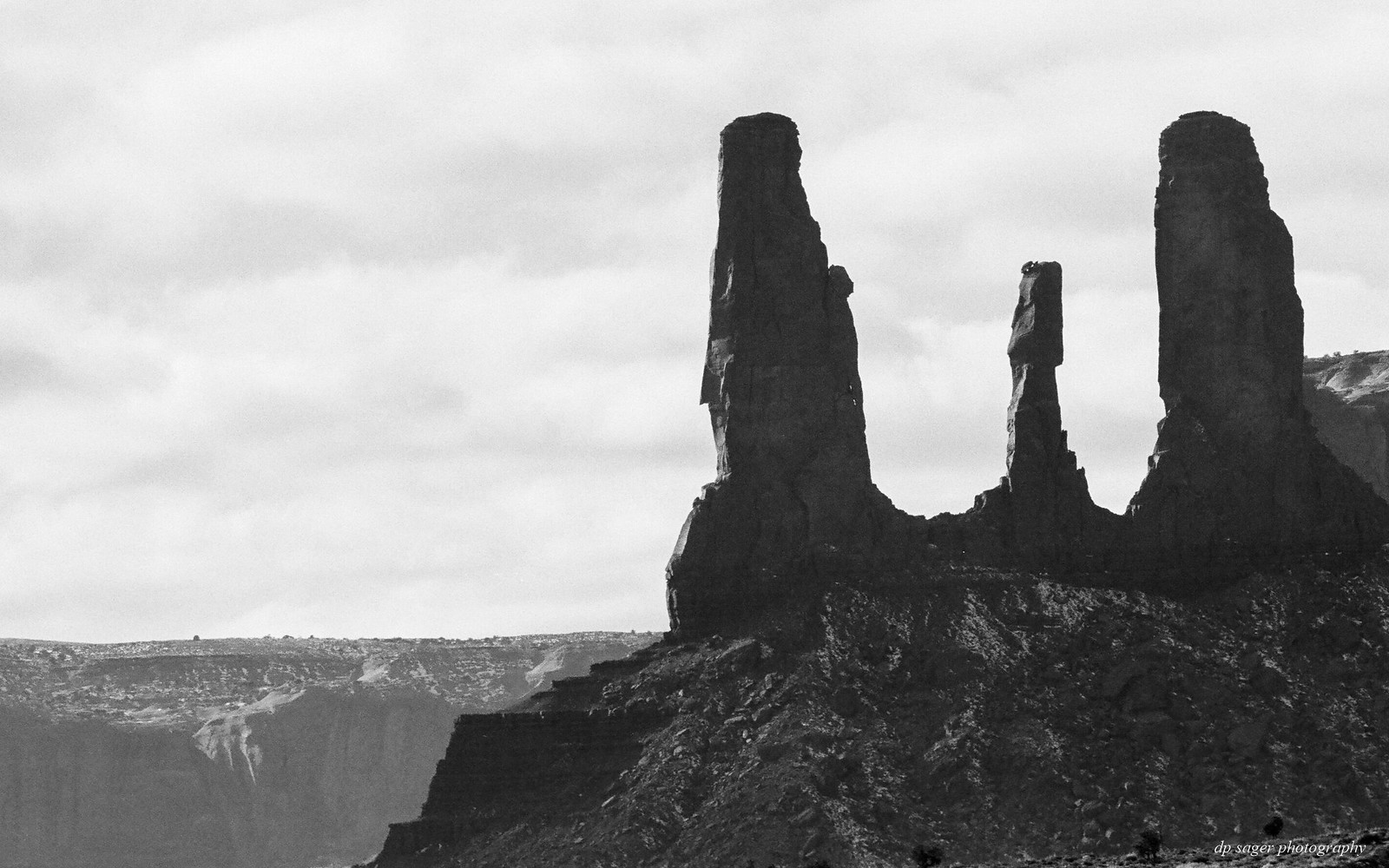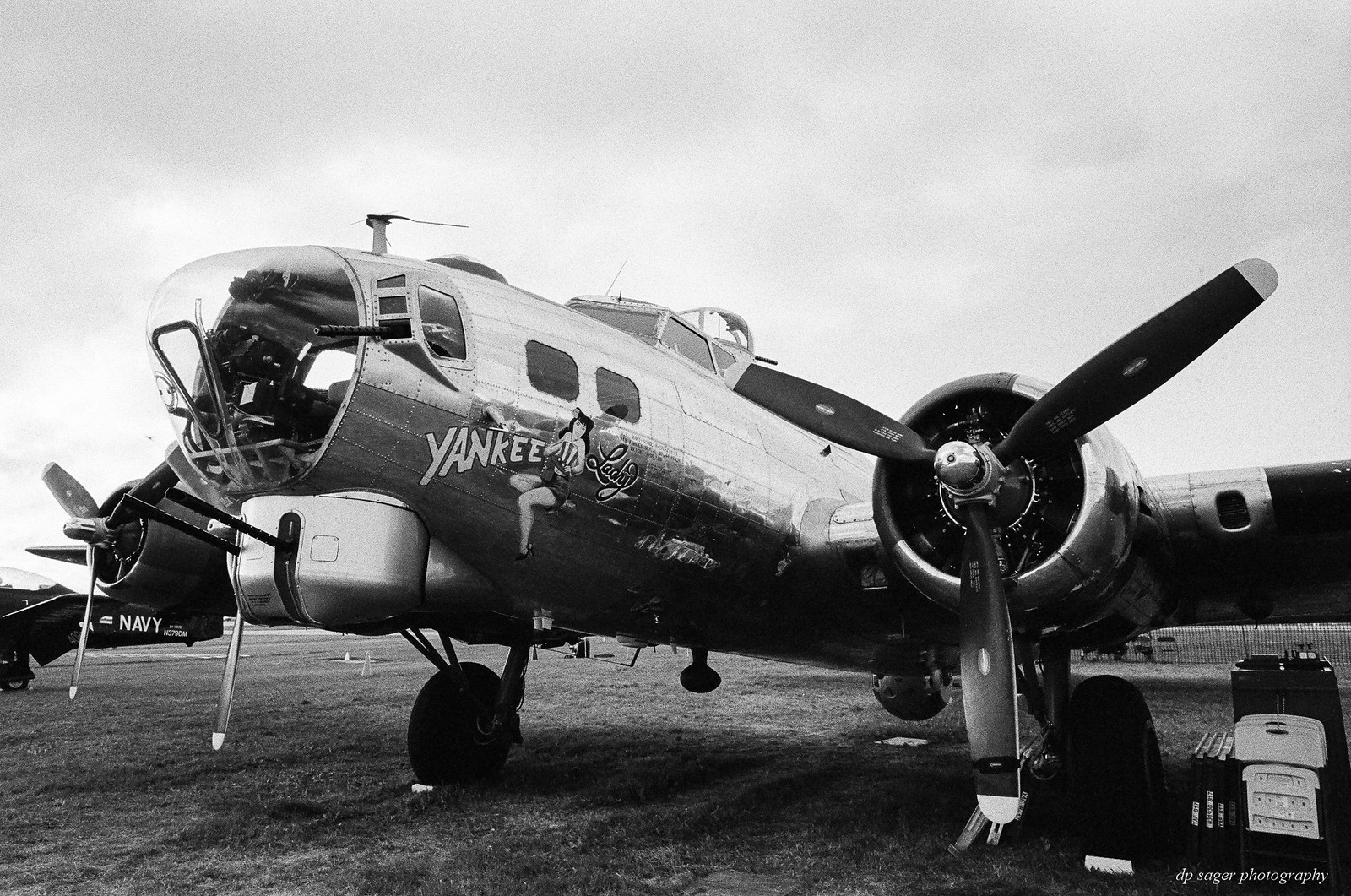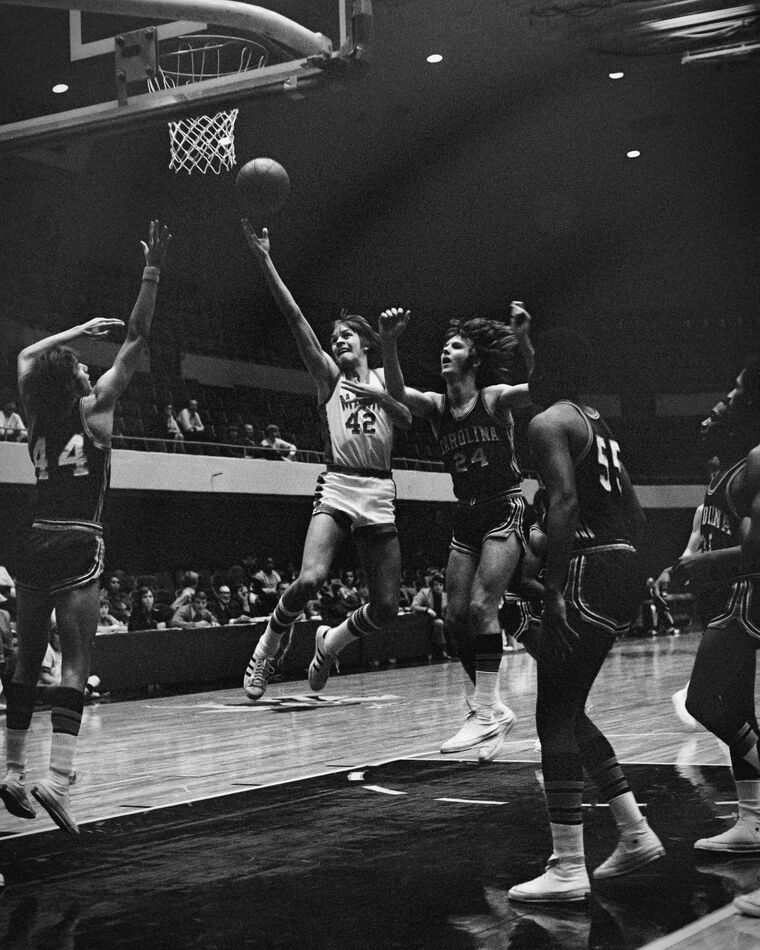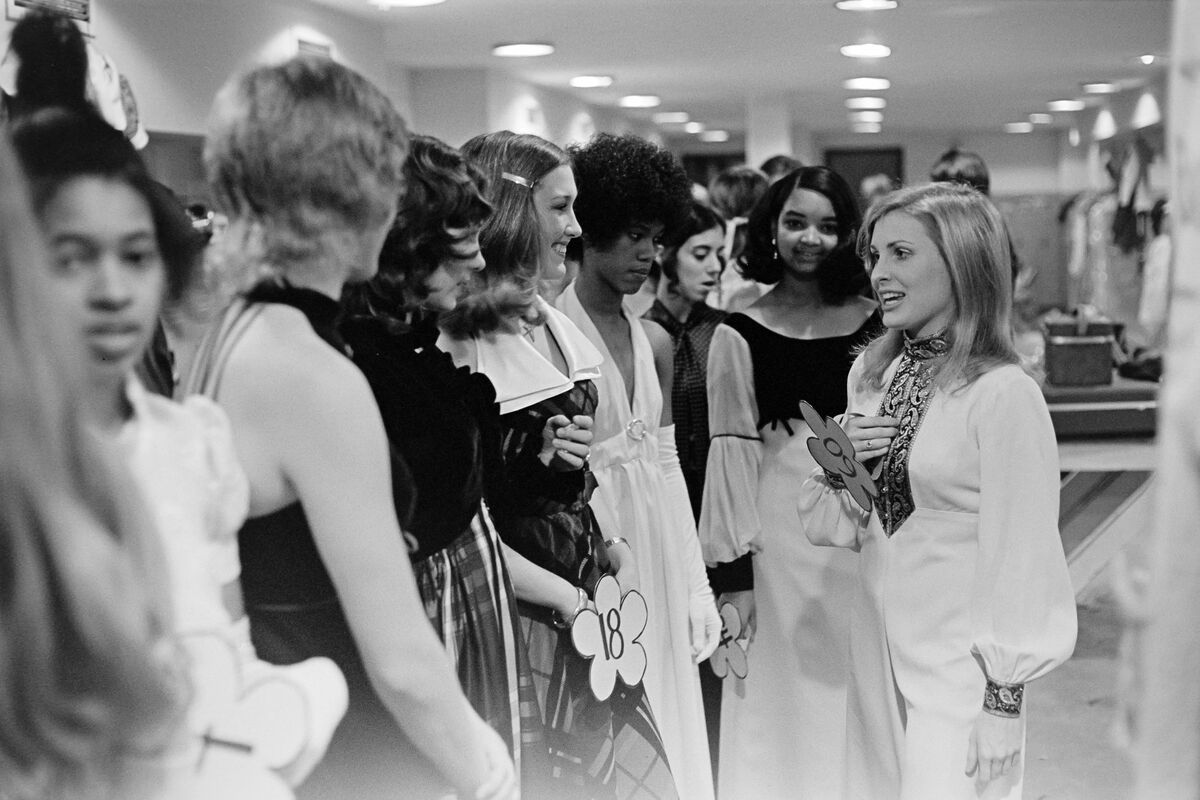Working with Kodak Tri-X 400
Nov 14, 2023 08:51:30 #
(Updated with new images)
Kodak Tri-X has been around in one form or another for a very long time. It is Kodak's most popular Black and White film, which probably says a lot right there. It's not the sharpest or finest grained film on the market, but a lot of people like its "look." This series of images looks at my own Tri-X 400 results dating from 2013 through 2022, presented in time-sequence order.
Lakefront on film by Paul Sager, on Flickr

Kodak Tri-X was initially introduced in 1940 as a sheet film. It took nearly 15 years until Tri-X was made available in 35mm and 120 formats. The introduction of these two formats in 1954 is commonly cited as the official 'birthday' of Tri-X.
Monument Valley

Tri-X panchromatic film was once one of the most popular films used by photojournalists and amateurs. A panchromatic emulsion is a type of black-and-white film that is sensitive to all wavelengths of visible light, producing a realistic reproduction of a scene as it appears to the human eye, although with no colors.
Monument Valley

Tri-X has undergone a number of minor engineering changes during its long history. An early change in ASA (ISO) speed from 200 to 400, around 1960, was due to a change in the ASA standard rather than the film. In 2007, Tri-X was extensively re-engineered, receiving the new designation 400TX in place of TX or TX400, and it became finer-grained. The amount of silver in the film stock was reduced during the 2007 re-engineering.
Greening the River in B&W

The images through the Chicago River above were all captured without a colored filter, with the film rated as ISO-400. Most of the following images use Orange, Deep Red or Yellow filters, as well as adjustments to the ISO rating.
Yankee Lady

What I see in some of these images is too much grain for my personal taste. What I've learned is to overexpose both C41 color and B&W film, either by adjusting the ISO when loading the film or using Exposure Compensation. Exposure adjustments are needed both without a filter, and especially when using colored filters.
Grand Canyon National Park

I'd say now my default setting for Tri-X 400 is to rate the film as ISO-320 or ISO-250 when loading into the camera, and then adjusting to the filter and / or conditions from there.
USS Alabama

Both the USS Alabama above, and the Ft Clinch flag below, are +2 EC for the orange filter at ISO-400. I feel there's an opportunity for a bit less grain if the film had just 1/3-stop more and had been loaded as ISO-320.
Fort Clinch

This winter frame in March 2021 is the first Tri-X roll loaded specifically for investigating and proving the new exposure approach. On an overcast snowy day, the film was loaded as ISO-200. I love the results, but in comparing with rolls show at ISO-250 in similar low light, I can see how the fine details are beginning to be lost when so far overexposed.
Deuce's Bar

I've become better at keeping notes about what days a film is shot and with what lens(es), most times including what colored filter was used. But still, since the filter doesn't report in the EXIF data I can extract from the EOS 1v, sometimes it's still a guess. I don't think this image of Gabby used a filter, where the effective ISO was ISO-160 after the EC adjustment and the ISO loading adjustment. So even the comment about losing fine details when overexposed is difficult to demonstrate, unless a specific comparison frame is available.
Gabby on Tri-X

Another difficulty of the color filters is getting enough light for the slower shutterspeed. At the Grand Canyon and in the park outside the USS Alabama, above, I just brought a tripod. But when traveling around downtown Chicago, I need to select a bright day or an IS-enabled lens, and / or be very careful in my technique with a non IS lens.
Quincy L Station

Another comment I found about Tri-X is it isn't so good for sunny days. The first view of Chicago above was a clear sun-lit morning. The Merchandise Mart below is a blazing April afternoon sun, with an orange filter. In both frames I can't find support for the bright light comments.
Merchandise Mart

These final few images are some new favorites of the Tri-X review and what prompted this respective post.
USS Drum

Here Gabby is shown indoors at ISO-320. Consider whether the details are better here vs the earlier Gabby image with 1-stop greater exposure at an effective ISO-160.
Gabby in B&W

This image shows maybe the best result of using ISO-320 and +2 stops for an orange filter. The grain in minimal in the clear blue sky, with all the details of the subject.
Magdalena

This final image again uses a filter, yellow this time, and +1 stop EC over the ISO-320 override of the film DX code.
Coneflower in B&W

Kodak Tri-X has been around in one form or another for a very long time. It is Kodak's most popular Black and White film, which probably says a lot right there. It's not the sharpest or finest grained film on the market, but a lot of people like its "look." This series of images looks at my own Tri-X 400 results dating from 2013 through 2022, presented in time-sequence order.
Lakefront on film by Paul Sager, on Flickr

Kodak Tri-X was initially introduced in 1940 as a sheet film. It took nearly 15 years until Tri-X was made available in 35mm and 120 formats. The introduction of these two formats in 1954 is commonly cited as the official 'birthday' of Tri-X.
Monument Valley

Tri-X panchromatic film was once one of the most popular films used by photojournalists and amateurs. A panchromatic emulsion is a type of black-and-white film that is sensitive to all wavelengths of visible light, producing a realistic reproduction of a scene as it appears to the human eye, although with no colors.
Monument Valley

Tri-X has undergone a number of minor engineering changes during its long history. An early change in ASA (ISO) speed from 200 to 400, around 1960, was due to a change in the ASA standard rather than the film. In 2007, Tri-X was extensively re-engineered, receiving the new designation 400TX in place of TX or TX400, and it became finer-grained. The amount of silver in the film stock was reduced during the 2007 re-engineering.
Greening the River in B&W

The images through the Chicago River above were all captured without a colored filter, with the film rated as ISO-400. Most of the following images use Orange, Deep Red or Yellow filters, as well as adjustments to the ISO rating.
Yankee Lady

What I see in some of these images is too much grain for my personal taste. What I've learned is to overexpose both C41 color and B&W film, either by adjusting the ISO when loading the film or using Exposure Compensation. Exposure adjustments are needed both without a filter, and especially when using colored filters.
Grand Canyon National Park

I'd say now my default setting for Tri-X 400 is to rate the film as ISO-320 or ISO-250 when loading into the camera, and then adjusting to the filter and / or conditions from there.
USS Alabama

Both the USS Alabama above, and the Ft Clinch flag below, are +2 EC for the orange filter at ISO-400. I feel there's an opportunity for a bit less grain if the film had just 1/3-stop more and had been loaded as ISO-320.
Fort Clinch

This winter frame in March 2021 is the first Tri-X roll loaded specifically for investigating and proving the new exposure approach. On an overcast snowy day, the film was loaded as ISO-200. I love the results, but in comparing with rolls show at ISO-250 in similar low light, I can see how the fine details are beginning to be lost when so far overexposed.
Deuce's Bar

I've become better at keeping notes about what days a film is shot and with what lens(es), most times including what colored filter was used. But still, since the filter doesn't report in the EXIF data I can extract from the EOS 1v, sometimes it's still a guess. I don't think this image of Gabby used a filter, where the effective ISO was ISO-160 after the EC adjustment and the ISO loading adjustment. So even the comment about losing fine details when overexposed is difficult to demonstrate, unless a specific comparison frame is available.
Gabby on Tri-X

Another difficulty of the color filters is getting enough light for the slower shutterspeed. At the Grand Canyon and in the park outside the USS Alabama, above, I just brought a tripod. But when traveling around downtown Chicago, I need to select a bright day or an IS-enabled lens, and / or be very careful in my technique with a non IS lens.
Quincy L Station

Another comment I found about Tri-X is it isn't so good for sunny days. The first view of Chicago above was a clear sun-lit morning. The Merchandise Mart below is a blazing April afternoon sun, with an orange filter. In both frames I can't find support for the bright light comments.
Merchandise Mart

These final few images are some new favorites of the Tri-X review and what prompted this respective post.
USS Drum

Here Gabby is shown indoors at ISO-320. Consider whether the details are better here vs the earlier Gabby image with 1-stop greater exposure at an effective ISO-160.
Gabby in B&W

This image shows maybe the best result of using ISO-320 and +2 stops for an orange filter. The grain in minimal in the clear blue sky, with all the details of the subject.
Magdalena

This final image again uses a filter, yellow this time, and +1 stop EC over the ISO-320 override of the film DX code.
Coneflower in B&W

Nov 14, 2023 08:52:21 #
I posted much the same text a few years ago, with different images at: https://www.uglyhedgehog.com/t-696571-1.html
Hence, 'updated'.
Hence, 'updated'.

Nov 14, 2023 09:40:20 #
Nov 14, 2023 11:36:34 #
sgt hop wrote:
twas my favorite film....
I bought a bunch from someone here on UHH a few years ago. I thought I didn't / hadn't used it much in the past. But, my LR catalog says otherwise, much to my surprise and amusement.
Nov 15, 2023 12:13:46 #
CHG_CANON wrote:
(Updated with new images) br br Kodak Tri-X has b... (show quote)
Nice, Paul!
Tri-X was the film I used in high school back in the 1970s, when making candids and sports photos for the newspaper and yearbook. Most of the time, I was working with available light, in dimly lit stadiums, gyms, auditoriums, and classrooms. So most of the time, I was pushing it at least one stop, but more likely to an exposure index* of 1280. I used Acufine or Acu-1 developer to do that. Acufine still sells both developers, but because there is less silver in modern Tri-X, you can't push it as far as the old film. E.I. 1000 is the top recommended rating now. (Their Diafine two-part developer will still allow a two-stop push to 1600. It was 2400 "way back when.")
*ASA and ISO speeds are based on the minimum exposure that yields full scale tonal rendering, while exposure indices (E.I. ratings) are based on higher or lower ratings that do not optimize the tonal scale in its entirety. The point is to use a compensating developer to restrain highlight buildup, while allowing shadow areas to develop to greater than normal densities. The result is a negative that, while lacking shadow detail in areas that did not respond to any light, is still printable in the mid-tones and highlights.
Here are a couple of samples from the old pushed Tri-X. Both were Tri-X rated at 1280. The top one is probably underexposed a bit. That was in a local coliseum in Greenville, SC, that was VERY dimly lit. The other image was made in the green room under the stage where we were running a beauty pageant. Pageants were still a "big thing" in South Carolina in 1973... Half our yearbook budget came from ticket sales and donations at that pageant. It would never happen now.
Note the lack of deep shadow detail in both photos. That's the price we paid for higher film speed ratings.
Nov 16, 2023 08:36:57 #
Nice film images, Paul. I used to shoot Tri-X until HP5 came along. I liked it better, but right now I can't remember why.
Nov 16, 2023 08:49:23 #
Thank John, Bill! I've been spending hours over the past few weeks racking n stacking, sorting & updating, all my various film scans in Lightroom and Flickr, trying to make my own assessment(s) of why I like 'this' film vs 'that' film. What I really want is my own short-hand list of film stock attributes of each of my inventory rolls, and my own how-to-use steps. I'm finding I have hundreds of images across multiple rolls for each Kodak's and Ilford's overlapping tabular and cubic grain films.
I'm getting to the point to share other films and 'history' text comments. But more importantly, to begin to present the 'blow-out' details of the various film grains to maybe answer why I (and anyone) might prefer 'this' film vs 'that' film in each of our usage decisions.
I know I've been saying 'stay tuned' a lot, but stay tuned.
I'm getting to the point to share other films and 'history' text comments. But more importantly, to begin to present the 'blow-out' details of the various film grains to maybe answer why I (and anyone) might prefer 'this' film vs 'that' film in each of our usage decisions.
I know I've been saying 'stay tuned' a lot, but stay tuned.

Nov 16, 2023 09:43:29 #
CHG_CANON wrote:
Thank John, Bill! I've been spending hours over th... (show quote)
That's a good exercise, very similar to what I did in my 20s when I moved to using Ilford B&W films almost exclusively. For me, it was about the longer and smoother, more natural tonal scale I was getting with HP5 and FP4. Unfortunately, the developer I preferred, ID-11 PLUS, no longer exists. ID-11 does, but without the silver chelating agent that sequestered dissolved silver from the solution, preventing it from "randomly re-plating" onto the negatives during development, as happens with ID-11 and D-76 (which are essentially the same developer). Apparently, the "Plus" additive was too poisonous and got banned in the UK.
If you happen to have an old Q-13 or Q-14 Kodak or Tiffen 21-step gray scale chart sitting around, put it to good use. It can help you pinpoint the exact ISO/E.I. rating to use with each film and developer combination (or lab, if the lab is consistent). I used one of those, plus a ColorChecker Chart, to do exposure ring-arounds with each new emulsion batch I bought (color and B&W). (Price of a new one ranges from $30 to $90, so shop around if you want a new one.)
As manufacturing tolerances vary, I found that film speed varied as much as 2/3 stop between batches. One emulsion might be 1/3 stop slow, and the next one 1/3 stop fast. If you have a lot of outdated film in the freezer, running a ring-around exposure test with a Q-13 can help you pinpoint the right speed rating and development time for your tastes.
Nov 16, 2023 09:48:50 #
burkphoto wrote:
That's a good exercise, very similar to what I did... (show quote)
LOL ... this is a Nov 2023 exercise on scanned negatives dating back only as far as 2013 by someone with zero interest in hand-developing film. I outsource the scanning now too. Hopefully, my much less precise analysis will correlate with more accurate, detailed and knowledgeable results. But, I have no asperations for such a level detail.

Nov 16, 2023 09:49:38 #
CHG_CANON wrote:
LOL ... this is a Nov 2023 exercise on scanned negatives dating back only as far as 2013 by someone with zero interest in hand-developing film. I outsource the scanning now too. Hopefully, my much less precise analysis will correlate with more accurate, detailed and knowledgeable results. But, I have no asperations for such a level detail. 

Understood. But for those who do...
If you want to reply, then register here. Registration is free and your account is created instantly, so you can post right away.




